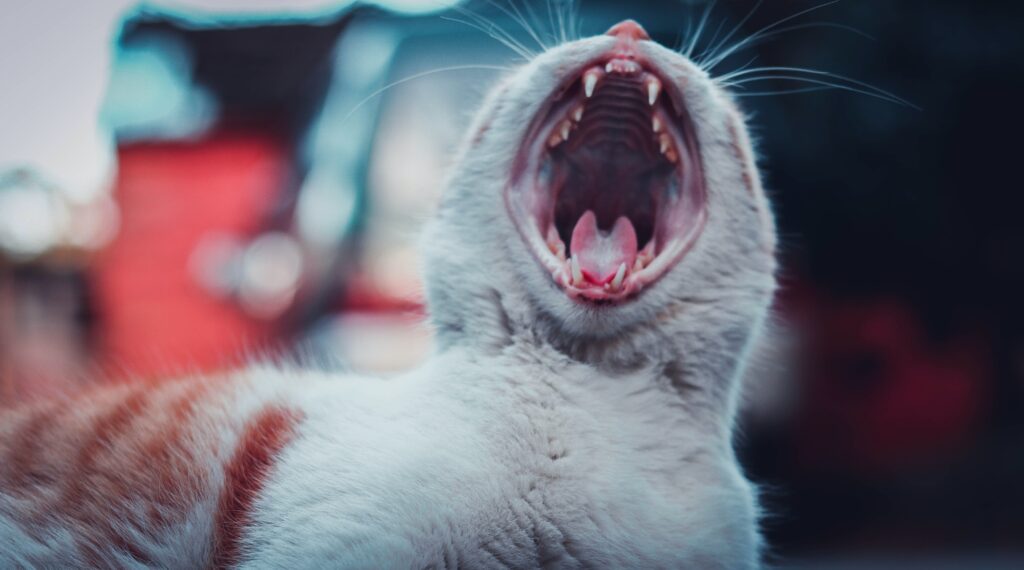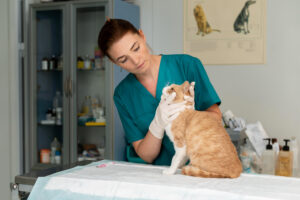Cats have two sets of teeth, much like humans. They have 26 deciduous teeth when they are kittens, sometimes referred to as primary, baby, or milk teeth. They have 30 permanent teeth when they’re adult cats.
When do kittens get their deciduous teeth?
kittens will begin to develop their deciduous (baby) teeth around 6-8 weeks of age. These little pearly whites can be quite sharp and may even take you by surprise if your finger happens to cross their path during playtime! By 6-8 weeks, most kittens will have a full set of baby teeth – a total of 26 in all.
But here’s where it gets interesting: these baby teeth are not meant to last forever. As your little furball grows, so too does their mouth. Around 3-4 months old, the process of replacing those temporary teeth with permanent ones begins. It’s important to note that every kitten is unique and may experience slight variations in tooth development timelines.
When do kittens get their permanent teeth?
Kittens typically start getting their permanent teeth around 3 to 4 months of age. The process continues over several months until they are around 6 or 7 months old. During this time, kittens will lose their baby teeth (also known as deciduous teeth) and replace them with their permanent teeth.
The order in which the teeth come in can vary, but generally. The incisors (front teeth) are the first to appear, followed by the canine teeth (fangs), and then the premolars and molars. By the time kittens are around 6 to 7 months old. They should have a full set of 30 adult teeth.
What happens during teething?
Teething is a natural and necessary process that all kittens go through as they grow. It can be an uncomfortable time for our furry friends, but understanding what happens during teething can help us to provide the care and support they need.
During the teething stage, kittens start to lose their baby teeth, also known as deciduous teeth, and replace them with their permanent ones. The first set of adult molars usually comes in around four months old, followed by the canine teeth at five months. And finally the adult incisors at six months.
As new teeth push through the gums, your kitten may experience some discomfort or pain. You might notice increased drooling or chewing behavior during this time as well. Providing them with appropriate chew toys or soft foods can help alleviate these symptoms.
It’s important to note that not all kittens have an easy teething process. Some may experience complications like persistent teeth where a baby tooth fails to fall out on its own when the permanent tooth erupts behind it. Persistent deciduous teeth are more commonly seen in certain areas. Such as the upper canine (fang) area or lower premolar area. These retained baby teeth can cause problems such as overcrowding, misalignment of adult teeth, gum irritation, and even dental disease if left untreated.
What is a persistent tooth?
A persistent tooth refers to a deciduous (baby) tooth that fails to fall out when the permanent tooth is ready to erupt. Essentially, it means that the baby tooth sticks around longer than it should.
During normal development, as kittens grow and their jaws expand, the roots of their baby teeth dissolve, allowing them to naturally fall out and make room for permanent teeth. However, in some cases, this process doesn’t go as planned and a baby tooth remains in place even after its replacement has started growing.

Which deciduous teeth are more likely to be persistent?
The most common culprits of persistent teeth in cats are the canines (fangs). These long and sharp teeth tend to have larger roots compared to other baby teeth, making them more prone to persistence.
What problems are caused by persistent teeth?
Persistent or retained deciduous teeth can cause several issues for cats. First and foremost, they can impede the proper eruption of permanent teeth. This misalignment can lead to bite problems known as malocclusion.
When left untreated, these misaligned or crowded adult teeth may become difficult for your furry friend to clean effectively while grooming themselves. This increases the risk of dental diseases such as tartar buildup or periodontal issues.
Keep Reading: https://dogpets.org/cat-health/how-often-do-you-take-a-cat-to-the-vet/
When and how are persistent teeth treated?
At any given time, no two teeth should be seated in the same socket. Make an appointment with your veterinarian as soon as you can to schedule an examination if you see a recurring tooth in your kitten’s mouth. The preferred course of action is extraction unless the baby tooth is extremely movable. Waiting until your kitten has been neutered or spayed is not advised.
In these situations, early excision will typically enable the adult teeth to erupt into their ideal placements and stop further malocclusion issues. General anaesthesia and intraoral radiographs (X-rays) before. After the extraction are both necessary for the extraction of the retained tooth. In order to protect the developing roots of the new permanent tooth, your veterinarian will take particular precautions while extracting any stubborn teeth.
What happens if there is a delay before extracting the persisting tooth?
Delaying extraction can result in further complications down the road. As time goes on with an unresolved issue like this one – overcrowded mouth due mainly to failed eruption processes- pressure builds up on surrounding tissues leading to not only discomfort but also gum inflammation called gingivitis among other things related specifically to oral health.


